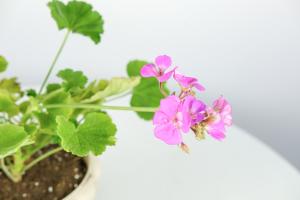Introduction:
Marijuana is a widely used drug that is derived from the Cannabis plant. It contains a chemical compound known as tetrahydrocannabinol (THC) which is responsible for its psychoactive effects. THC is found in high concentrations in female cannabis plants and is responsible for much of the potency of marijuana. However, the question remains, do male pot plants produce THC, and if so, to what extent? This article aims to answer this question and shed some light on the role of male cannabis plants in the production of THC.
What are male cannabis plants?
Male cannabis plants are the counterpart to female plants, and their main function is to produce pollen for reproduction. Unlike female plants that produce the buds, which contain the highest levels of THC, male plants are generally devoid of any THC content. Instead, they contain only trace amounts of THC which are not enough to produce any psychoactive effects.
Do male cannabis plants produce THC?
Despite being predominantly THC-free, male cannabis plants have been shown to contain some THC, albeit in very low concentrations. According to research, male plants can produce THC in quantities of up to 0.3%, which is significantly lower than the 10-30% THC content found in female plants. The THC content in male plants is usually found in the small leaves and flowers near the pollen sacs, but the amounts produced are generally too small to be useful.
Role of male plants in cannabis cultivation:
The primary function of male plants in cannabis cultivation is for pollination purposes only. Pollen from male plants is used to fertilize female plants, which then produce the buds that contain the highest levels of THC. As such, male plants are not necessarily grown for their THC content, but for their pollination abilities.
Can male plants be used to produce THC?
Although male plants contain some THC, they are generally not preferred for use in producing THC-rich cannabis products. This is because the amount of THC found in male plants is not enough to produce the desired psychoactive effects. Additionally, the production of THC in male plants is usually limited to certain genetic strains of cannabis, meaning that not all varieties of cannabis will produce THC in male plants. As such, while male plants can contribute to the creation of new strains, they are not typically used to produce THC products for recreational or medicinal purposes.
Conclusion:
In summary, male cannabis plants do contain some THC, but the levels are not significant enough to produce any psychoactive effects. The primary function of male plants in cannabis cultivation is for pollination purposes only, and they are not typically used to produce THC-rich products. It is the female plants that are cultivated for their THC content and are responsible for the potency of marijuana.

 how many times do yo...
how many times do yo... how many planted tre...
how many planted tre... how many pine trees ...
how many pine trees ... how many pecan trees...
how many pecan trees... how many plants comp...
how many plants comp... how many plants can ...
how many plants can ... how many plants and ...
how many plants and ... how many pepper plan...
how many pepper plan...
































